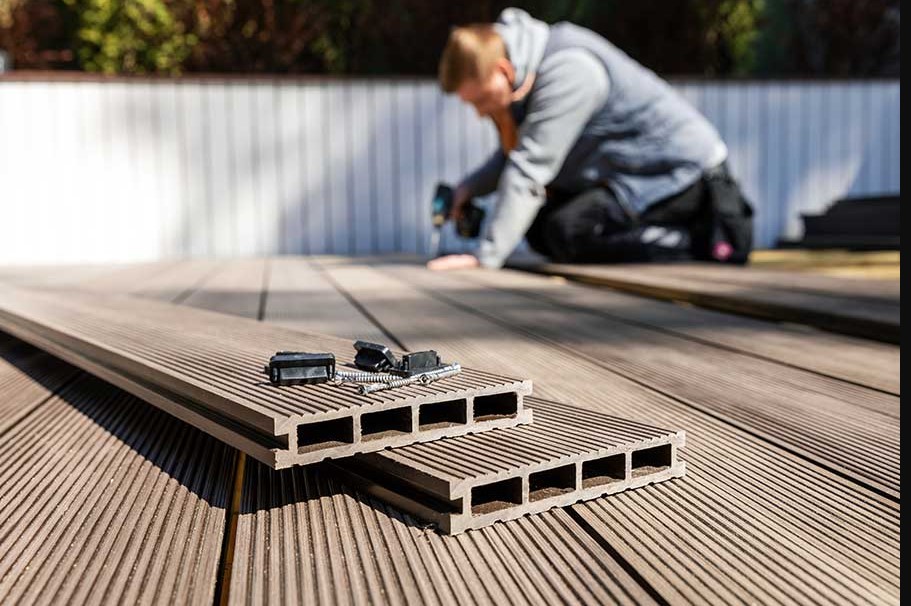WPC Decking: The Future of Outdoor Flooring
When it comes to creating stunning, low-maintenance outdoor spaces, WPC decking (Wood-Plastic Composite decking) has quickly become the go-to solution for homeowners, builders, and designers alike. Combining the natural look of wood with the resilience of plastic, WPC decking offers a smart, sustainable alternative to traditional timber and other materials.
What is WPC Decking?
WPC decking is made from a composite of wood fibers (usually sawdust or wood flour) and thermoplastics (such as polyethylene or PVC). These ingredients are blended and extruded to form solid or hollow decking boards that mimic the texture and appearance of natural wood—without many of its drawbacks.
WPC decking is used in:
- Patios and terraces
- Garden pathways
- Balconies
- Poolside areas
- Commercial boardwalks and rooftop decks
Key Advantages of WPC Decking
1. Weather Resistance
WPC decking is designed to withstand:
- UV exposure
- Rain, snow, and humidity
- Temperature fluctuations
- Saltwater (ideal for coastal properties)
2. Low Maintenance
Say goodbye to sanding, sealing, and staining. WPC boards only need occasional cleaning with soap and water—no special treatments required.
3. Slip Resistance
Most WPC decking surfaces have a textured or grooved finish that provides excellent traction, even when wet—making it a safe choice for pool areas and public spaces.
4. Durability
WPC decking resists:
- Rot and decay
- Insects and termites
- Cracks, splinters, and warping
Boards typically last 15–30 years with minimal upkeep.
5. Eco-Friendly
Many WPC products use recycled materials and reduce the need for deforestation, making them a sustainable option for environmentally conscious projects.
Types of WPC Decking
Solid vs. Hollow Boards
- Solid WPC Decking: Heavier and more durable; ideal for high-traffic or commercial use.
- Hollow WPC Decking: Lighter and often more cost-effective; suitable for residential projects.
Capped vs. Uncapped Boards
- Capped (Co-extruded): Features a protective outer shell for enhanced stain and UV resistance.
- Uncapped: Still durable, but may fade slightly over time without protective coating.
Installation Basics
WPC decking boards are often installed with hidden fastener systems or clips, ensuring a clean finish without visible screws. A proper sub-frame—either timber or metal—should be used to provide structural support and allow for drainage.
Important installation tips:
- Allow for expansion gaps (WPC expands slightly in heat)
- Ensure good airflow beneath the deck
- Use manufacturer-approved fixings and spacings
Comparison: WPC vs. Wood vs. PVC Decking
| Feature | WPC Decking | Wood Decking | PVC Decking |
| Maintenance | Very low | High | Low |
| Water Resistance | Excellent | Poor | Excellent |
| Aesthetic Variety | High | Natural grain | Moderate |
| Eco-Friendliness | High (if recycled) | Depends on source | Low |
| Durability | 15–30 years | 10–15 years | 25+ years |
| Slip Resistance | Good | Varies | Very good |
Applications
- Residential: Backyard decks, outdoor lounges, rooftop terraces
- Hospitality: Resort walkways, hotel balconies, pool decks
- Commercial: Outdoor dining areas, parks, public promenades
- Urban design: Pedestrian bridges, elevated platforms, plaza decks
Final Thoughts
WPC decking is a smart, stylish, and sustainable solution for anyone looking to build a long-lasting outdoor floor. With its blend of natural aesthetics, modern engineering, and eco-conscious materials, WPC offers the perfect balance between beauty and performance.
Whether you’re updating a backyard or planning a large-scale outdoor space, WPC decking helps bring your vision to life—without the headache of ongoing maintenance.









